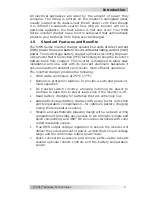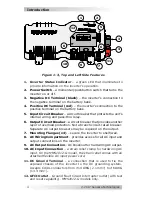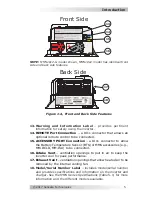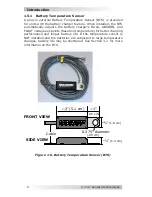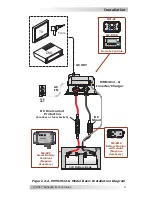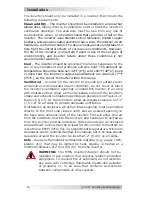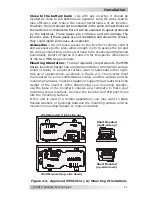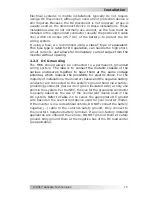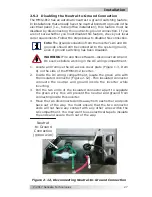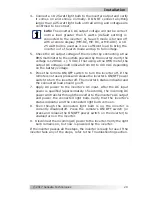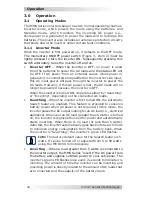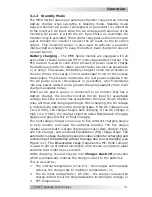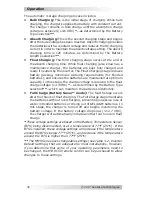
© 2017 Sensata Technologies
17
Figure 2-6, DC Cable to Battery Terminals
BATTERY
DC cable
with ring lug
bolt
flat washer
Nut
(½” wrench)
lock washer
battery
post
battery terminal
Temperature sensor
Verify that the DC cable lugs
are flush with the battery
terminals. Torque the battery
terminals from 10 to 12 ft-lbs.
2.2.4 DC Cable Connections
When connecting the DC cable to the battery or to the inverter’s DC
terminals, the hardware should be installed in the correct order to
prevent high resistance connections from heating up and possibly
causing the connections to melt. Stack the hardware per Figures
2-6 & 2-7. Tighten the terminal connections from 10 to 12 ft-lbs
(13.6 to 16.3 N m).
CAUTION:
Do not put anything between the DC cable
ring lug and the battery terminal post or the inverter’s
DC terminal. If antioxidant grease or spray is used, apply
it after all the connections have been made and are
properly tightened.
CAUTION:
Overtightening or misthreading nuts on the DC
terminals will cause the bolts to strip and snap/break-off.
CAUTION:
The inverter is NOT reverse polarity protected
(negative and positive connected backwards). You must
verify the correct voltage polarity BEFORE connecting the
DC wires or damage may occur.
Crimped and sealed copper ring terminal lugs with a 5/16” hole should
be used to connect the DC wires to the inverter’s DC terminals.
Installation

